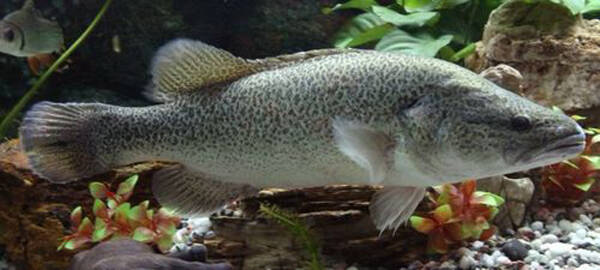The scientific name of cod is Eleginus gracilis. It is a kind of deep-sea fish and one of the economic edible fish. There are 9 species, namely: silver cod, Pacific cod, Atlantic cod, haddock, blue cod, green cod, haddock, Norwegian cod, and pollock.

Cod is a cold-water fish in the middle and lower layers. It is a schooling fish. Most of them live in the cold sea with a water temperature of 0~16℃. Adult fish mainly live in the 175-225m water layer, and juvenile fish live in 80-100m. Adults and juveniles have the habit of moving vertically day and night. Adults swim from deep water to shallow water spawning holes, and juveniles have the habit of clustering. They feed on invertebrates and small fish, such as krill, mysid shrimp, smelt, capelin, etc. They live in the cold water area of the Yellow Sea in summer and autumn, and migrate to the coastal mud bottom area with a water depth of 50-80m in winter to hibernate. They are generally sexually mature at 4-5 years old. The spawning period is from December to April of the following year, with the peak period from January to February. The egg-bearing capacity is 250,000 to 1 million. The eggs are sinking eggs with an egg diameter of 0.98-1.05mm. The fertilized eggs hatch in 12-17 days at a water temperature of 6-7℃.

The cod is white, tender, thick, and has few bones. It is sweet and refreshing, and is the main edible fish in many countries around the world. Cod is rich in nutrients, such as protein, vitamin A, vitamin D, calcium, magnesium, selenium and other nutrients. The protein content of cod is higher than that of salmon, crucian carp, pomfret and hairtail; while the fat content is 7 times lower than that of hairtail and about 17 times lower than that of salmon. Cod fat contains globulin, albumin, etc., as well as various amino acids necessary for children's development. The ratio is very close to the amount required by children, and it is very easy to be digested and absorbed by the human body. The liver of cod is large and high in oil (20-40% oil content). In addition to being rich in DHA and EPA in ordinary fish oil, it is also rich in vitamins A, D, E and other vitamins necessary for the human body. It is a high-quality raw material for extracting cod liver oil. The ratio of these nutrients in cod liver oil is exactly the optimal ratio of the daily amount required by the human body. In addition, cod meat is rich in magnesium, which is beneficial for preventing cardiovascular diseases such as hypertension and myocardial infarction, and has a good protective effect on the cardiovascular system. Therefore, cod is known as "gold in the sea" and "nutritionist on the table" in Europe.
Cod also has certain health benefits. Fish meat can promote blood circulation and remove blood stasis; fish bladder can replenish blood and stop bleeding; fish bones can treat athlete's foot; cod liver oil can heal sores, clear away heat and reduce inflammation, inhibit tuberculosis bacteria, and eliminate bacteria in infectious trauma. The ointment made from it can quickly liquefy gangrenous tissue; cod pancreas contains a large amount of insulin, and 12000IU insulin can be extracted from 1kg of pancreas, which has a good effect of lowering blood sugar.
This fish is an endangered protected animal, and its fishing is strictly restricted.
Protect wild animals and eliminate game.
Maintaining ecological balance is everyone's responsibility!